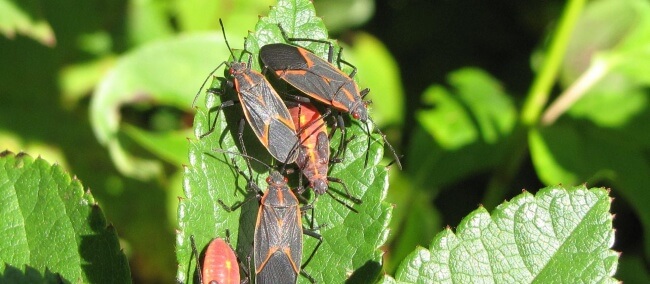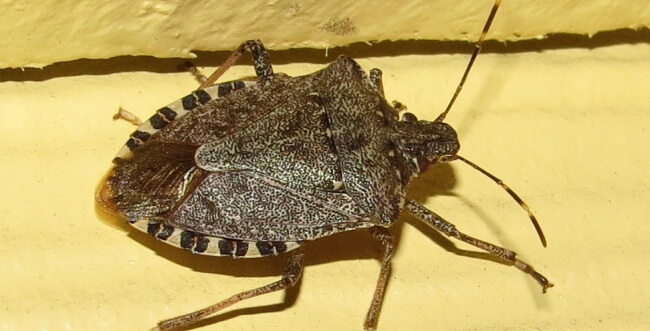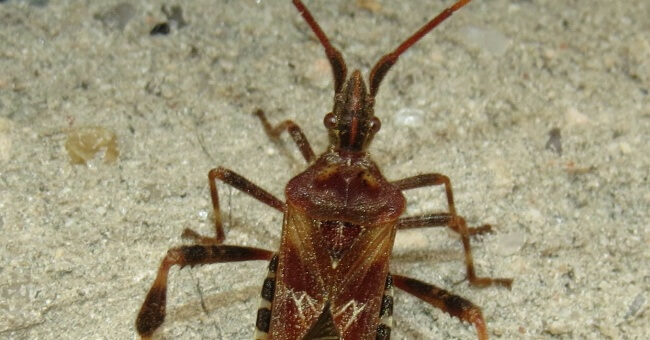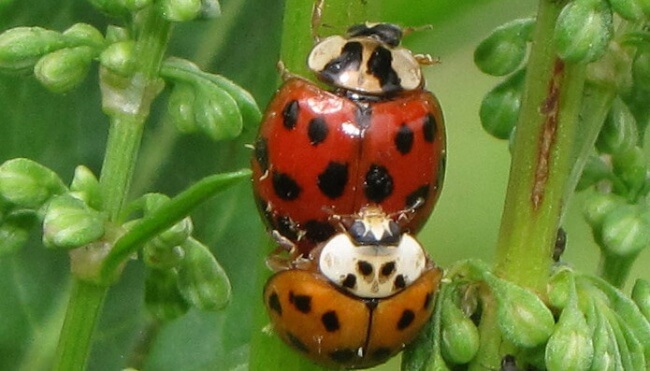A surprising number of insects follow us indoors come autumn, taking refuge from the impending winter weather. Fortunately, most are not pests. Here are the common ones, and how to help stop them from entering your home.
Boxelder Bugs
 Boxelder Bugs can reach overwhelming numbers. East of the Rockies is the Eastern Boxelder Bug, Boisea trivittata. West of the divide is Boisea rubrolineata, the Western Boxelder Bug. They suck sap from boxelder and maples, but rarely damage them. In autumn, boxelder bugs congregate on the exterior of buildings to catch the warm rays of the sun; but they also seek snug nooks and crannies in which to spend the winter.
Boxelder Bugs can reach overwhelming numbers. East of the Rockies is the Eastern Boxelder Bug, Boisea trivittata. West of the divide is Boisea rubrolineata, the Western Boxelder Bug. They suck sap from boxelder and maples, but rarely damage them. In autumn, boxelder bugs congregate on the exterior of buildings to catch the warm rays of the sun; but they also seek snug nooks and crannies in which to spend the winter.
Brown Marmorated Stink Bug
 The Brown Marmorated Stink Bug, Halyomorpha halys, is native to eastern Asia, but was first seen in the U.S. in Pennsylvania in 1998. It is now widespread. It sucks on orchard and field crops outdoors. Meanwhile, hordes of the adult insects seek winter shelter indoors, often in great numbers. Native, innocuous Brochymena spp. are similar.
The Brown Marmorated Stink Bug, Halyomorpha halys, is native to eastern Asia, but was first seen in the U.S. in Pennsylvania in 1998. It is now widespread. It sucks on orchard and field crops outdoors. Meanwhile, hordes of the adult insects seek winter shelter indoors, often in great numbers. Native, innocuous Brochymena spp. are similar.
Western Conifer Seed Bug
 The Western Conifer Seed Bug, Leptoglossus occidentalis, ranges across the entire northern third of the U.S. This is the bug on your Christmas tree, where it feeds on developing cones. An occasional pest on tree farms, it is otherwise a slow-moving nuisance with a loud, droning flight. This species is often mistaken for “kissing bugs.”
The Western Conifer Seed Bug, Leptoglossus occidentalis, ranges across the entire northern third of the U.S. This is the bug on your Christmas tree, where it feeds on developing cones. An occasional pest on tree farms, it is otherwise a slow-moving nuisance with a loud, droning flight. This species is often mistaken for “kissing bugs.”
Multicolored Asian Lady Beetle
 The Multicolored Asian Lady Beetle, Harmonia axyridis, is a Eurasian immigrant that took hold in Louisiana in 1988 and has since spread far and wide. It helpfully feeds on aphids in trees and shrubs, but seeks winter shelter indoors where it may bite people, leave stains, and give off a permeating odor.
The Multicolored Asian Lady Beetle, Harmonia axyridis, is a Eurasian immigrant that took hold in Louisiana in 1988 and has since spread far and wide. It helpfully feeds on aphids in trees and shrubs, but seeks winter shelter indoors where it may bite people, leave stains, and give off a permeating odor.
Keeping Outdoor Insects at Bay
- Repair or replace worn weather-stripping around doors.
- Mend holes in window screens, or replace them.
- Seal other cracks and crevices with caulk or another appropriate material.
- Carefully inspect all items coming indoors from outside.